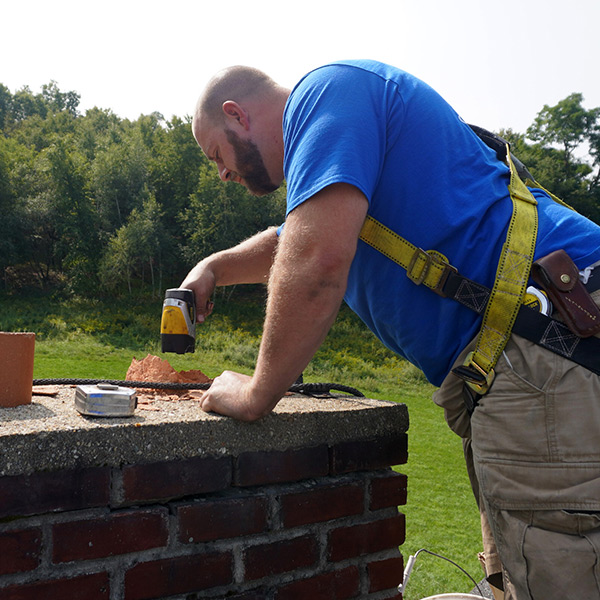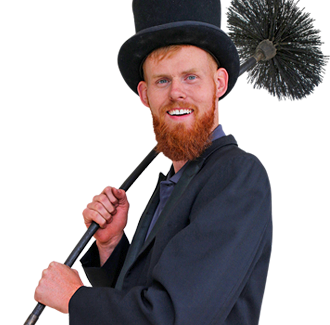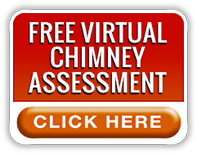The Chimney Vents More Than Just The Fireplace
Chimneys are not just venting your wood-burning or gas fireplace. Many homes in the Hudson Valley area have multiple heating appliances, like a gas water heater, furnace, or boiler that are also venting in the chimney to expel harmful fumes such as carbon monoxide (CO). Routine maintenance, including annual chimney inspections and cleaning, is essential to their safe, efficient, and reliable operation.
Venting Multiple Heating Appliances in the Chimney
 Although gas appliances burn cleaner than other types of fuel, the combustion process still produces various byproducts, including soot, creosote, and corrosive substances that adhere to the interior masonry walls and chimney components. The build-up of soot and corrosive residues gradually damages the chimney and restricts the venting of dangerous fumes, increasing the risk of fire and exposure to carbon monoxide gas. Without annual chimney inspections and periodic cleaning, homeowners may not be aware of potential dangers until more severe damage has occurred.
Although gas appliances burn cleaner than other types of fuel, the combustion process still produces various byproducts, including soot, creosote, and corrosive substances that adhere to the interior masonry walls and chimney components. The build-up of soot and corrosive residues gradually damages the chimney and restricts the venting of dangerous fumes, increasing the risk of fire and exposure to carbon monoxide gas. Without annual chimney inspections and periodic cleaning, homeowners may not be aware of potential dangers until more severe damage has occurred.
Chimney Venting Requirements
When multiple appliances, such as a furnace and gas water heater, are venting in a shared chimney, it is necessary to note that each appliance must adhere to specific venting requirements for it to perform safely and efficiently. For example, gas appliances with flue vents that are not correctly sized for the chimney can cause drafting problems resulting in carbon monoxide and other combustion byproducts leaking into the home. An undersized flue can also cause excessive heat increasing the risk of fire to nearby combustible objects.
Masonry Damage
Masonry chimneys are porous structures, and their continuous exposure to changing weather conditions including rain, ice, wind, and heat can accelerate their deterioration. As the masonry damage worsens, water can leak inside the chimney, mix with the corrosive residue, and cause extensive damage to the chimney liner and other components, while increasing fire and carbon monoxide exposure risk. In addition, unrepaired masonry damage can result in bricks loosening and eventually separating from the chimney, which can ultimately lead to an expensive repair: a chimney collapse.
Flue Obstruction
Small animals, including birds, squirrels, and debris, can enter the chimney through a damaged or missing chimney cap and obstruct the venting of hazardous fumes from your gas water heater, furnace, and other gas appliances. It can also cause carbon monoxide to leak inside the living space. Carbon monoxide is a colorless, odorless, and tasteless gas. Breathing in carbon monoxide fumes can lead to carbon monoxide poisoning, which can cause severe illness and death.
Chimney Inspection and Cleaning
 Annual chimney inspections and regular chimney cleaning is the best way to ensure your chimney, vents, and attached gas heating appliances are venting correctly and are not a health or safety hazard. Homeowners should also have a level 2 chimney inspection by a CSIA-Certified chimney sweep whenever installing a new gas heating appliance or modifying an existing appliance to ensure the flue vent is the correct size for the chimney and will operate safely and efficiently. A level 2 inspection also includes a video scan, an indispensable tool for detecting minor cracks and other anomalies in the flue system before they grow into more extensive repairs. In addition to assessing the chimney’s condition, the chimney sweep will also determine whether chimney cleaning is necessary. In most cases, the chimney sweep can complete the inspection and cleaning in the same visit giving homeowners the assurance their chimney and gas heating appliances are safe to operate.
Annual chimney inspections and regular chimney cleaning is the best way to ensure your chimney, vents, and attached gas heating appliances are venting correctly and are not a health or safety hazard. Homeowners should also have a level 2 chimney inspection by a CSIA-Certified chimney sweep whenever installing a new gas heating appliance or modifying an existing appliance to ensure the flue vent is the correct size for the chimney and will operate safely and efficiently. A level 2 inspection also includes a video scan, an indispensable tool for detecting minor cracks and other anomalies in the flue system before they grow into more extensive repairs. In addition to assessing the chimney’s condition, the chimney sweep will also determine whether chimney cleaning is necessary. In most cases, the chimney sweep can complete the inspection and cleaning in the same visit giving homeowners the assurance their chimney and gas heating appliances are safe to operate.








